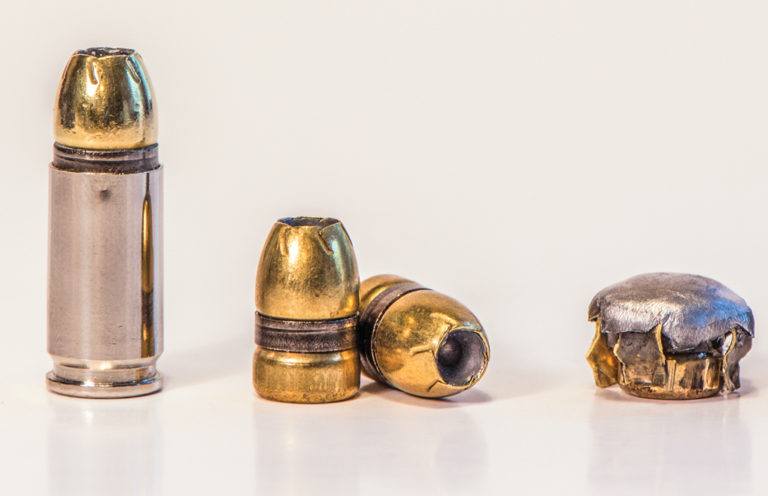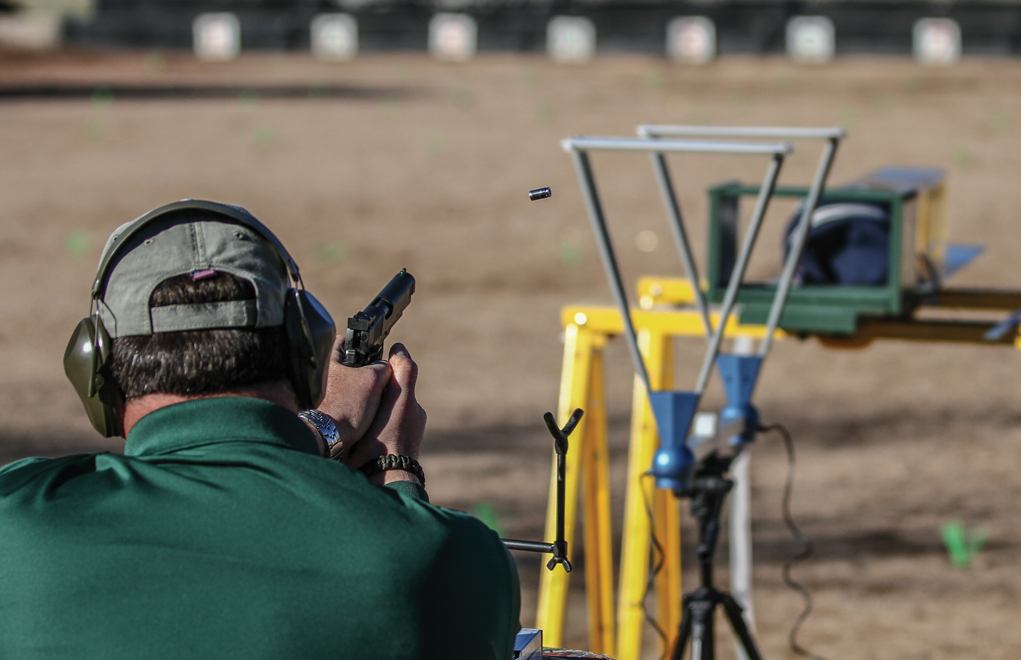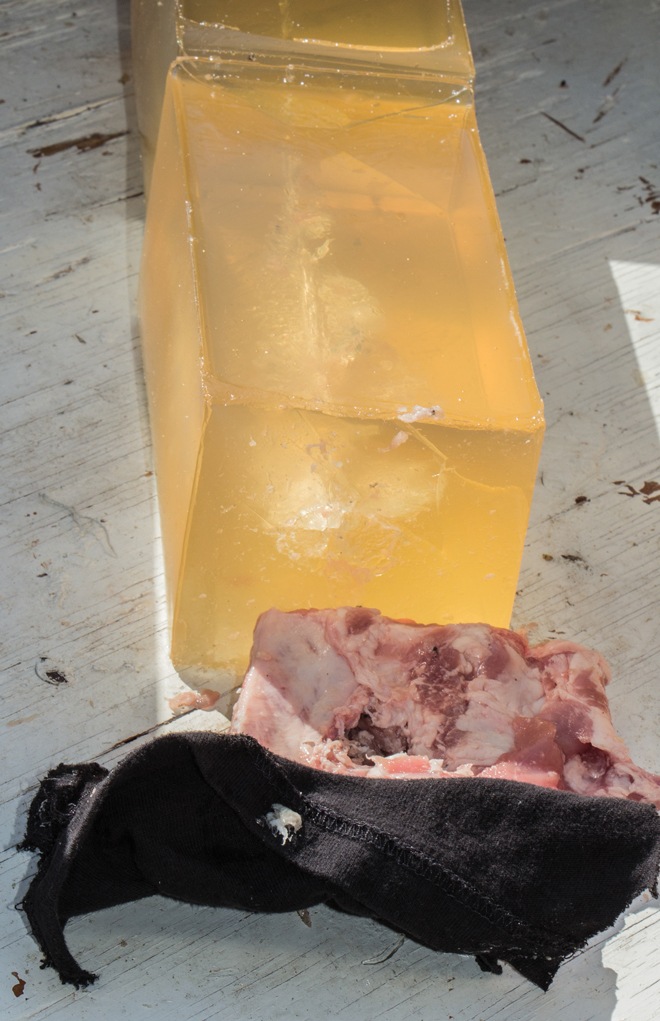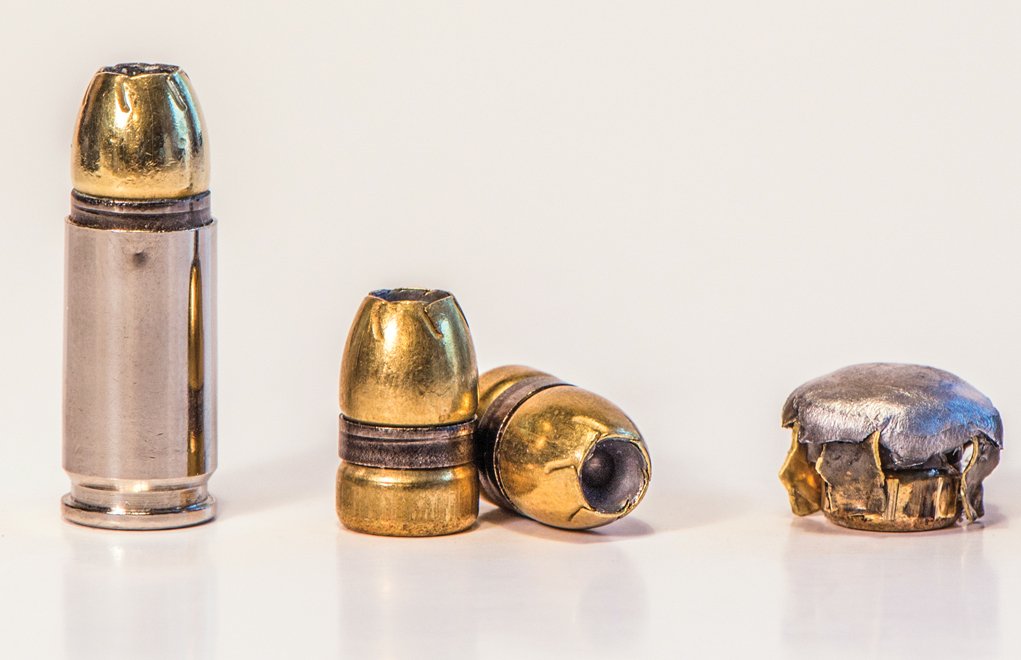
Tests can contradict each other, so how do you go about figuring out what defensive handgun and ammo you should choose?
Parameters to make a defensive handgun choice:
- Caliber adequate for defense
- Concealable
- Ample capacity
- Accurate for your proficiency
Many organizations, agencies and even individuals have developed theories to rate the effectiveness of defensive handgun ammunition. Most of the results, though they seem definitive in nature, are contradictory. Here’s a brief snapshot of more than 100 years of speculation.

The search for the perfect defensive handgun load has spawned elaborate testing contraptions and procedures, all looking for the magic bullet that doesn’t exist. In 1904, U.S. Army Captain John Thompson and Major Louis LaGarde shot live steers and dead humans to determine which cartridges were most effective. Julian Hatcher, a former Technical Editor at American Rifleman, based his theory of Relative Stopping Power on this study, concluding the .45 ACP twice as effective as a 9mm. In 1975, the National Institute of Justice finalized what they called the Relative Incapacitation Index, which was later updated in 1985. This study was based on hypothetical assumptions and a computer-generated man. The study rated the 9mm twice as effective as the .45 ACP.
After the shoot-out in Miami in 1986, the FBI began basing its ammunition opinions on bullets fired through various intermediate barriers and into 10-percent ordnance gelatin. The FBI’s conclusion was that the minimum acceptable penetration was 12 inches. This is how we ended up with the 40 S&W. The supposed bad bullet that prompted the FBI’s now legendary testing protocol, surprisingly performed very well in a 1987 test conducted by the Secret Service. It was based on a bullet’s ability to deposit energy in the first 5.9 inches of 20-percent ordnance gelatin. The supporting logic was the greater the energy deposit, the greater the potential for tissue damage.
More Concealed Carry Knowledge:
- Essential Gear: Best Concealed Carry Holsters
- 6 Hot Micro 9mm Handguns For Everyday Carry
- The Mystery Of Stopping Power
- Developing A Combat Mindset
- The .45 ACP For Self-Defense
In 1991, a privately funded research group began studying the physiological effects of bullet impact on medium-sized animals. The objective was to isolate the mechanism responsible for rapid incapacitation of man-sized targets. This event — though some contend it never really happened — became known as the Strasbourg Tests. Supposedly, more than 600 goats died during the experiment.
That same year, the Naval Weapons Support Center (NWSC) tested a bunch of 9mm loads. Along with terminal performance and reliability, accuracy was also evaluated. Unlike the FBI, the NWSC used 20-percent ordnance gelatin because the Wound Ballistics Lab at the Letterman Army Institute of Research determined it best simulated muscle tissue.

Conducting independent testing on your own is a good way to learn about terminal performance so you can make an educated decision when it comes to ammo selection. All this illustrates is that nobody seems to agree on, well, hardly anything — at least when it comes to stopping bad guys with handguns. The problem is, humans cannot resist the urge to rate everything from football teams to members of the opposite sex with numbers. College basketball fans know how effective the numerical rating systems are; just this year a 16th ranked team beat a No. 1 for the first time in playoff history. Similarly, there’s very little consensus on whether Britney Spears is a 5, 8 or maybe an 11. A shooting is a chaotic event and numbers cannot value chaos. And, no matter the criteria, the bias of the evaluators always creeps in, and anomalies always exist.
Which study should you believe? Trust? What cartridge/load should you select? Do the research and conduct your own tests. I have, and I encourage it — not because you’ll discover a magic bullet, but because you’ll learn stuff. I have my theories, but guess what? They’re no more valid than others. Still, there’s nothing wrong with a practical approach, consistent with the doctrine I think best employed with almost everything in life: Keep it simple.

Though vastly underrated, Remington’s Black Belt ammunition performs very well — and it’s proved reliable in many handguns. Here are three keep-it-simple rules for defensive handgun and ammunition selection:
Rule #1: Carry the largest caliber, highest-capacity handgun you can comfortably conceal on a daily basis.
Rule #2: Load it with flawlessly functioning ammunition, delivering high energy levels and deep penetration, for your cartridge of choice.
Rule #3: Prove you can consistently use that combination to put five shots, inside a 5-inch circle, from 5 yards, in less than 5 seconds.
I’m constantly asked what ammunition I trust in the handguns I carry. What might surprise you is that I’m not all that picky. For me, priority No. 1 is reliability. If it does not go bang every time, the most wicked cartridge, loaded with the most wicked bullet, will only result in one hell of a wicked let down.
Editor's Note: This article originally appeared in the July 2018 issue of Gun Digest the Magazine.

Next Step: Get your FREE Printable Target Pack
Enhance your shooting precision with our 62 MOA Targets, perfect for rifles and handguns. Crafted in collaboration with Storm Tactical for accuracy and versatility.
Subscribe to the Gun Digest email newsletter and get your downloadable target pack sent straight to your inbox. Stay updated with the latest firearms info in the industry.




![Best Concealed Carry Guns In 2025 [Field Tested] Wilson Combat EDC X9S 1](https://gundigest.com/wp-content/uploads/Wilson-Combat-EDC-X9S-1-324x160.jpg)


![Best 9mm Carbine: Affordable PCCs [Tested] Ruger Carbine Shooting](https://gundigest.com/wp-content/uploads/Ruger-Carbine-Shooting-100x70.jpg)
![Best AR-15: Top Options Available Today [Field Tested] Harrington and Richardson PSA XM177E2 feature](https://gundigest.com/wp-content/uploads/Harrington-and-Richardson-PSA-XM177E2-feature-100x70.jpg)
